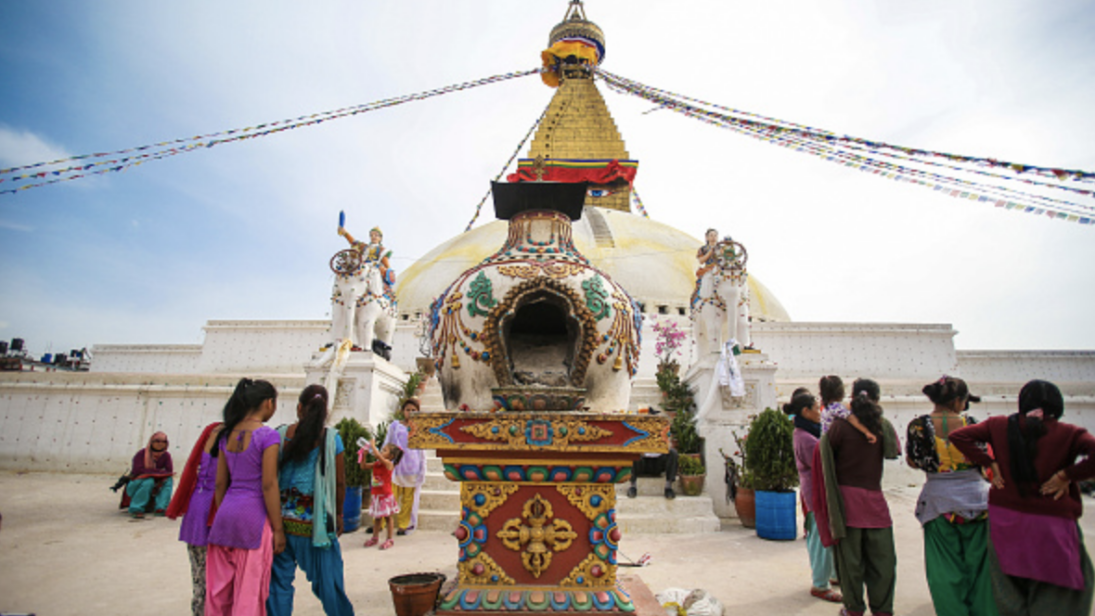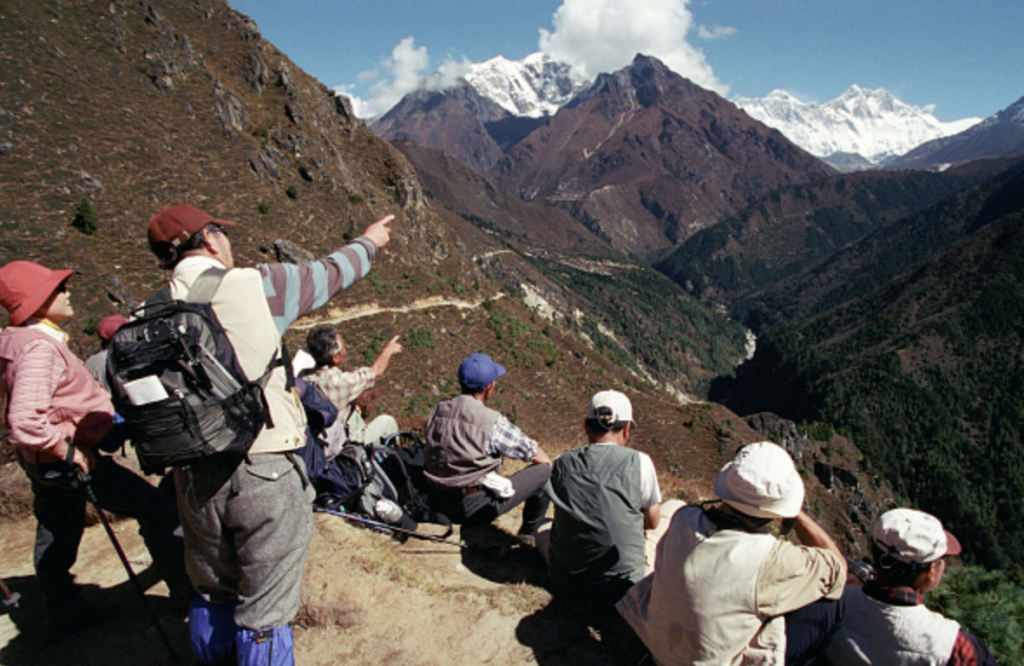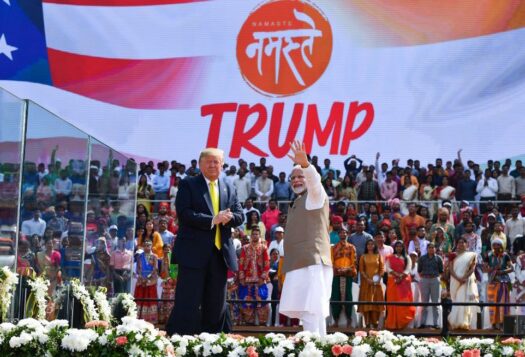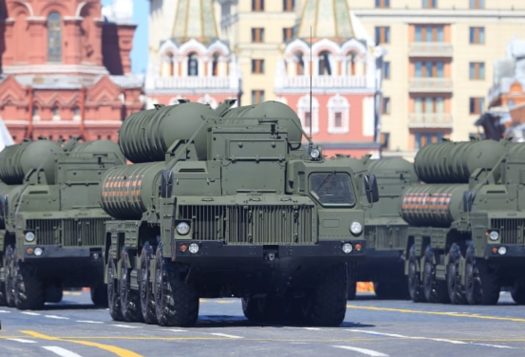
On August 16, Kathmandu’s Tribhuvan University inaugurated Nepal’s second Confucius Institute—one of the many such planned institutes to be built across Nepal with Chinese government funding. Located in over 100 countries worldwide, Confucius Institutes serve to promote Chinese culture through language classes, cultural events, and community engagement. Addressing the inauguration ceremony, the Chinese ambassador to Nepal, Hou Yanqi, noted that more than 30,000 learners have already registered with Confucius Institutes in Nepal to earn skills valuable for the country’s business and trade sectors—including tourism. In Kathmandu’s tourist locality, Thamel, learning to speak Chinese has been crucial to efforts to draw in more tourism from China. This was not the case just a decade prior when tourism was overwhelmingly from India. The effort to draw tourists from India and China can also be observed in Nepal’s foreign policy, which has become more reliant on its two neighboring giants. As the tourism sector begins to rebound after the pandemic, Nepal should use its tourism industry as a soft-power tool to develop connections and improve ties with countries outside of the China-India binary and pursue non-aligned geopolitical and economic goals.
Nepal’s Geopolitical Tussle and the Tourism Sector
Situated between the “Asian Giants,”–India and China–Nepal faces a geopolitical tussle as both countries seek to gain influence in the former Himalayan kingdom. South Asia, as part of the broader Indian Ocean region, is increasingly becoming an area of China-India rivalry where smaller countries are being pulled into a tug-of-war between the two, making it hard to exercise their own national interests without being cast in this binary. Historically, Nepal has been in the “sphere of influence” of Delhi, and the Himalayan country’s greater coziness to China over the years is a counter reaction to the country’s over-dependence on India. Earlier Chinese infrastructural limitations in Tibet and the Himalayan region had not allowed Nepal’s greater cooperation with its Northern neighbor, but the inauguration of railways and connectivity in the twenty-first century gives Kathmandu a willing partner in Beijing to counterbalance Delhi’s influence.
As the tourism sector begins to rebound after the pandemic, Nepal should use its tourism industry as a soft-power tool to develop connections and improve ties with countries outside of the China-India binary and pursue non-aligned geopolitical and economic goals.
India and Nepal’s cultural similarities, including both countries having Hindu majority populations, make Nepal a natural tourist destination for Indian travelers. Despite Nepal’s growing tourism sector, most tourists come from neighboring countries, with a lion’s share of the country’s arrivals crossing the border from India. However, in recent years, the number of Chinese tourists has grown in part to visit Buddhist heritage sites of Nepal and participate in adventure sports.
The COVID-19 pandemic, however, has devastated the global tourism industry. About 47.7 million travel and tourism jobs have been affected across South Asia. Despite tourism being one of South Asia’s fastest-growing sectors in 2019, the pandemic resulted in losses of more than 50 billion dollars. Among the countries in South Asia with the most reduction in tourist arrivals in 2020 were Bhutan, the Maldives, Nepal, and Sri Lanka, which each saw between a 70 and 80 percent reduction in tourist arrivals. In 2019, 1,197,191 tourists visited Nepal, accounting for 7.9 percent of its GDP. Although the COVID-19 pandemic affected the industry, Nepal’s tourism sector has bounced back with a 156.83 percent growth in April 2022 as compared to April 2021. Until November 2020, more than two thirds of the foreign investment pledges received in a five month period were in hotels, resorts, and restaurants. Out of Nepal’s total FDI commitments, 72 percent or Rs 13.8 billion (approximately USD 1.8 billion) were accounted for in the tourism sector. As Nepal’s tourism sector rejuvenates, there are opportunities to mold it into an effective soft power medium for outreach to countries beyond India and China, and diluting the geopolitical tussle that Nepal is at the moment entangled in. The promotion of tourism as part of a nation’s soft power arsenal should be treated no differently from developing a company’s marketing strategy. Developing a favorable and lasting image of a country internationally will in many cases help it enhance cooperation even in the economic and military domains in the future.
Nepal could try reducing its dependence on India and China by using one of its biggest arsenals– its tourism sector– to attract visitors from countries outside of China and India. For this purpose, Nepal must diversify its tourism base. Yet, Nepal’s policymakers still prioritizing these two countries in their tourism plans, such as in the “Visit Nepal Decade” plan. Although Nepal already has on-arrival visa policy for most nationalities, the Nepal’s Tourism Board can adopt more proactive steps to promote international tourism through its embassies and missions abroad, and use this medium as a soft power tool for people-to-people linkage and build relations beyond its immediate neighborhood.

Using the tourism industry to move beyond the India-China “balancing act”
From a political standpoint, Nepal’s location between China and India makes it an ideal place for diplomatic discussions. Nepal is home to SAARC’s Secretariat and UNICEF’s South Asia Headquarters. With the country now taking a role in the BBIN (Bangladesh, Bhutan, India, Nepal) sub-regional grouping, connectivity is expected to accelerate and Nepal will have access to Bangladeshi ports. Although this connectivity pact is between four South Asian nations, once this is operational, Nepal will get the opportunity to connect by the high seas to multiple countries outside the region and attract tourists from outside the subcontinent, emerging as a South Asian “New Geneva”.
As a short-term measure, Nepal can include religious and cultural elements in its international tourism promotion roadmap. Due to the heavy emphasis on mountaineering by British and Swiss expeditioners in the early stages of Nepal’s tourism development, Nepal’s rich religious and cultural landmarks have not been highlighted as effectively as many in Southeast Asian countries. The birthplace of Lord Buddha, Lumbini, lies within Nepalese territory. In May, on the occasion of Buddha Purnima, Indian Prime Minister Narendra Modi visited Lumbini and laid the foundations for the Center for Buddhist Culture and Heritage. Through religious tourism, Nepal can reach out to tourists from countries that share similar dharmic heritage, like Japan and Thailand, which contributed 30,534 and 41,653 tourists respectively in 2019. This is dwarfed by India’s 254,150 and China’s 169,543 visitors to Nepal that same year, signaling high potential and capacity to attract tourists from other East and Southeast Asian countries.
In the post-COVID-19 era, Nepal must also prioritize climate change adaptation and environmental preservation for the survival of its tourism industry. As a less-developed country, Nepal suffers disproportionately from flooding and landslides. Recently, the country’s tourism department announced that it is planning to move the Everest base camp because of rapidly thinning glaciers and erosion from climbers. More collaboration with neighboring SAARC countries that are also disproportionately affected by climate change, such as Bangladesh and the Maldives, would help Nepal adopt cheaper adaptation methods. Nepal can also experiment with Bhutan’s “High Value, Low Impact” tourism policy and issue special permits in some parts of the country to limit tourist access to preserve some of the nation’s pristine natural areas.
Nepal can also experiment with Bhutan’s “High Value, Low Impact” tourism policy and issue special permits in some parts of the country to limit tourist access to preserve some of the nation’s pristine natural areas.
Finally, the revitalization of the tourism sector must factor in the rights of vulnerable groups. A few months ago, the Nepal Tourism Board announced that it is facing a severe shortage of skilled manpower. Consequently, Nepal’s government has begun providing skill training to locals in the tourism sector, including women-only training for the first time. The overall investment in the tourism industry is minimal, particularly when it comes to labor issues. In the Himalayan region, local tourism hospitality is typically managed through a shadow economy based on family labor by the Sherpa people. Enforcement of existing regulations and rules needs to be a priority. In addition, general measures related to engaging the tourism sector in the upliftment of survivors of human trafficking are welcome, which have already been taken up by some NGOs.
Conclusion
Nepal’s “balancing act” between India and China is not unique but is something practiced by other smaller countries in South Asia, including Bangladesh, the Maldives, and Sri Lanka. As Nepal struggles to balance relations with India and China, the tourism sector provides a much-needed outlet to develop relations with third countries outside of the subcontinent. The tourism sector can be used to reach out to nations beyond South Asia via the high seas by effective use of the BBIN framework as well as through the promotion of Nepal’s Buddhist heritage, while simultaneously addressing pertinent issues, such as human rights and climate change. As with any form of soft power, tourism will have limits as opposed to hard power such as military or economic might, but Nepal’s tourism sector has substantial untapped potential which can be a tool to promote its national interest in an increasingly competitive geopolitical landscape.
***
Image 1: NurPhoto via Getty Images
Image 2: Prakash Mathema via Getty Images


